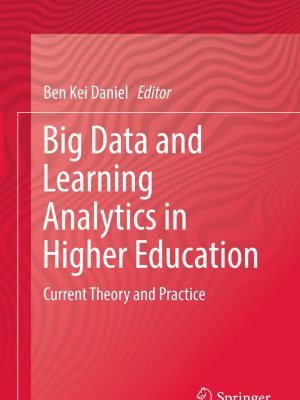Current Research
- Collaborations
- Current Research
EdTech Research
Our team consistently explore theories and learning in the realm of educational technology. We work with academics across departments to contribute to the advancement of EdTech and all of its aspects.

Current Research
Online Dexterity
Researching online teaching and learning strategies and the challenges of self-directed learning.
Uninstutional Technologies
Research into the technologies students are using to supprt their learning
Big Data and Learning Analytics
Looking at the uses of big data in the context of higher education
Sleep Study
Exploring the relationships between sleep and performance for medical undergraduates in a clinical setting.
Online Dexterity

When COVID-19 arrived teaching and learning had to be moved online quickly. Applications like Zoom (which has been around since 2013) became an integral tool for teachers and students but not everyone had made use of them until they had to. Associate Professor Joyce Koh used this pivotal time in history to research the concept of ‘Online Dexterity’ – what makes it hard for some teachers to adjust to new technologies while others found it easier to make the shift. “Is the problem just technical in nature?” she questioned, “Is it really just about a lack of technical skills? We wanted to use this project to define ‘online dexterity’, we know it has something to do with being flexible, adaptable and malleable.”
Abstract
Dexterity, or the ability to be flexible and adaptable has become an imperative during the COVID-19 pandemic. In this session, we present the findings of a UORG project that explores what online dexterity might mean to Otago teachers and students. Through interviews with 55 teachers, students and teaching support staff in 2021, we theorised the constructs of online dexterity and developed online dexterity survey instruments. In 2022, we surveyed 66 teachers and 87 students and ran seven learning cafes with teachers to discuss online dexterity strategies. Using these data, we share our learnings of what online dexterity means to Otago teachers and students and invite the audience to discuss the relevance of online dexterity beyond COVID.
Non-Institutional Technologies

When Dr Liu worked at the Otago Campus in Wellington his work centred around technical support and course designs. Students would often come to him to ask questions about accessing and using technical resources. “I would tell them, ‘I developed a nice package for you, did you use it?’ Sometimes they would be polite and say, “oh yes, thank you, it’s nice” and other more honest students would tell me “I barely go to Moodle, let alone the new package.”
This feedback from the students got him thinking about the huge amount of time and resources universities spent on creating things the students don’t use. “I’d spent so much effort developing these packages and the students are telling me they don’t login to Moodle. So I asked them ‘how are you learning?’”
Abstract
Research has explored the efficacy of a range of digital technologies on student learning. The ‘technologies’ being explored, however, have predominantly been those that are implemented by institutions or staff. There has been limited investigation into the use of technologies that are initiated by students. By overlooking self-initiated technology use, research leaves students as passive recipients of technologies. The agentic role of students in choosing the preferred technologies, and thereby shaping their own learning is neglected. Recent studies show that, despite the lack of guidance and institutional recognition, students prefer and even deliberately use technologies that are not offered by institutions (Berry, 2019; Flavin, 2016). Nevertheless, little is known in terms of why students use them and how they use them.
Big Data Analytics
The field of big data has the potential to revolutionise higher education. With many data sets being collected at different points in a student’s pathway through the university, big data has the potential to provide valuable insights into learning, teaching, and for research. However, there are also challenges that need to be addressed in order to fully leverage the opportunities provided by big data.
One of the key challenges is the way in which data is stored. Universities often use disparate systems that do not necessarily talk to each other, resulting in incomplete or duplicated data, and making data sharing across an institution difficult if not impossible. Further, when systems do not talk to each other, it makes it difficult for researchers to draw comparisons across divisions or between institutions. In addition, there can be barriers to accessing the data that students and researchers need in order to develop data models that could provide greater insights for the institution and inform decision-making.
Abstract
Higher education areas include information technology and its implications to teaching, learning and research. This presentation gives an overview of the different technology research communities that are surrounding educational technology. Associate Professor Ben Daniels breaks down the components of educational data science research-led projects and the progressions of data, analytics and big data in higher education. He explores the changing ecology of educational research and covers the difference between educational research and big data.
Sleep Study

The purpose of this study is to explore the relationships between sleep and performance in the clinical setting in medical imaging undergraduate students. The effect of sleep on performance has been studied previously, but research has relied on sleep-logs; a form of self-reporting. Biometric devices provide a non-invasive way to record sleep duration and efficiency without relying on self-reports. Through informal, near real-time discussions via instant messaging, students can link their sleep data to their feelings of wellbeing without relying heavily on retrospective self-reporting. Employing Actigraph devices, 24 hour sleep/wake data will be gathered including a) sleep duration, b) sleep efficiency.
Lorem ipsum dolor sit amet, consectetur adipiscing elit. Ut elit tellus, luctus nec ullamcorper mattis, pulvinar dapibus leo.
Place holder text/abstract on presentation to the left
